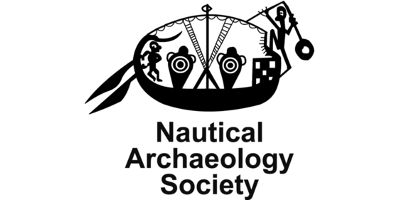A stormy start to the year
12/02/2024 | Lianne Havell
Once again, its pouring down in Lincolnshire and the wind is blowing a hoolie, 2024 has arrived with a vengeance.
Three storms, one after the other have lashed our beaches. We started with Storm Henk on 02/01/2024. The next one to arrive was Storm Isha on 10/01/2024 and then a few days later Storm Jocelyn arrived on 22/01/2024. These storms have stirred the seas and brought large waves which have carried in several items of interest as well as far too much marine litter and debris.
The first find was reported to me by a local resident - it turned out to be a 3kg tail fin practice bomb of military use. The issue with these bombs is the propellant in the tail sections and although they are practice bombs, they can still be dangerous! This is only the second time one has been found on our beach. I often expect to see more of these, as we are not far from Donna Nook bombing range. This bomb was found on 18th January, here’s a record of the tail fin found a few years ago.
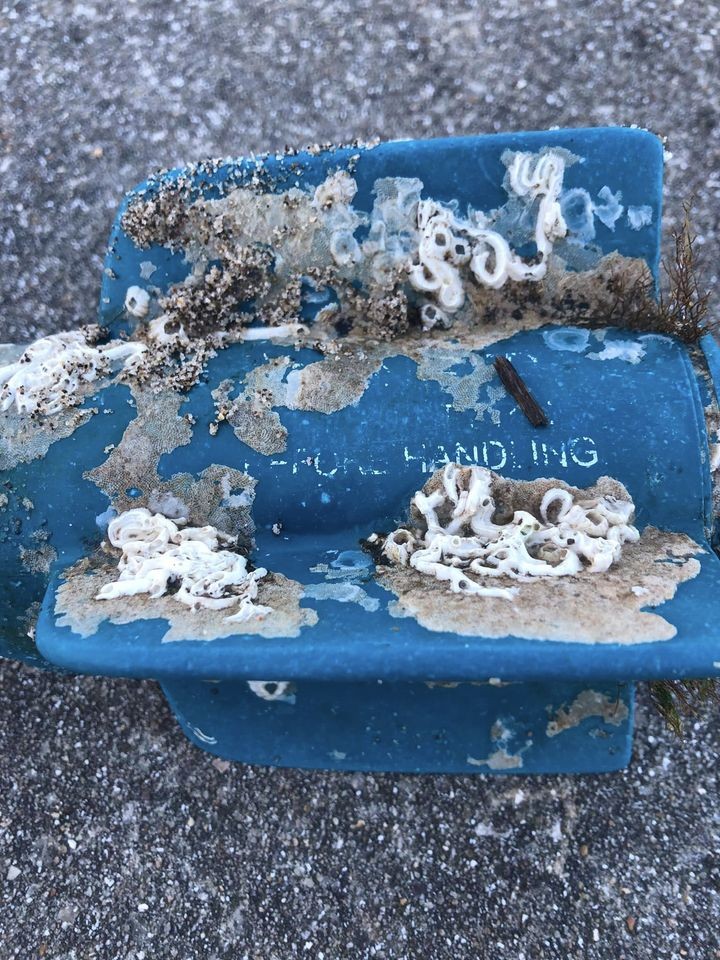
On the 22nd January we found a fair-sized piece of tree that probably dates to prehistoric period - thought to have come from close to the top of the Lincolnshire Peatshelf due to the holes in it. The holes are caused by marine worms which borrow into the wood to live. Andy thinks it’s probably an old piece of tree, because of its colour, submerged prehistoric wood tends to be black or brown in colour while more modern wood looks lighter in colour and often has more bark etc attached. We’ve also sighted several large pieces of peat broken off from the peatshelf by the waves. [The peatshelf of the coast of Lincolnshire, which can be found between Mablethorpe and Ingoldmells is dated to between the Iron Age and the Bronze Age – Andy.]
On the 27th January we found more wood and peat and also a small piece of timber from a shipwreck. We again recorded and photographed everything, and then sent the information to Andy. He thinks there may be an ‘X’ carved into the ship’s timber. [Sometimes timbers have letters and numbers carved onto them to indicate where they should go when a ship is being built: read about the ones found on HMS Namur – Andy.]
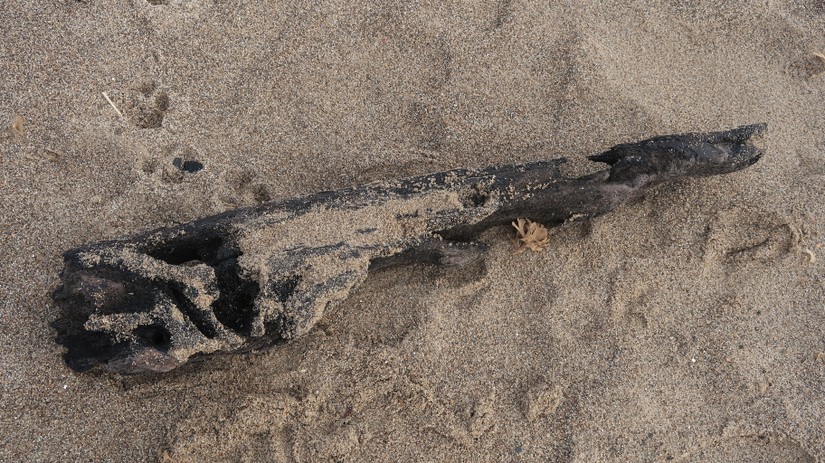
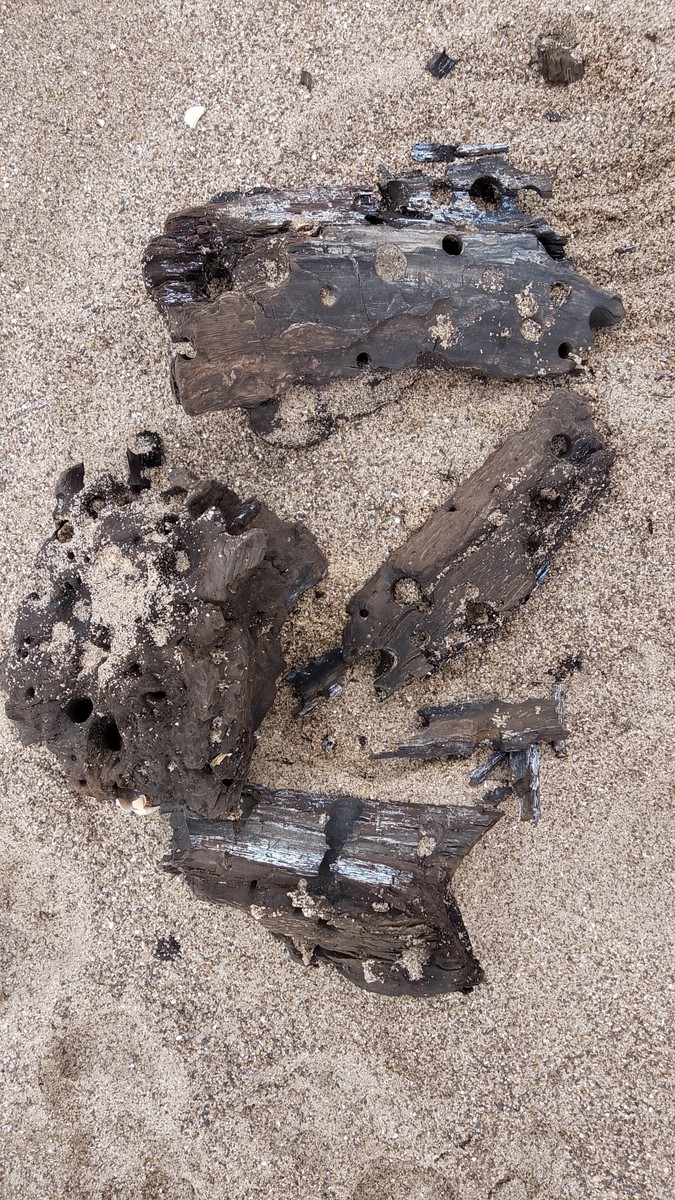
On the 27th January my husband and I went for a walk at Anderby Creek. We were stopped in our tracks by a large piece of timber which from the size alone we realised had to be a piece of shipwreck. We spent a while taking photographs, sketching, and sizing and made notes about the iron bolts and treenails we could see in the find. I was excited to get home and send all the details to Andy as I felt it could be our best find to date, apart from the Trusthorpe wreck piece we found back in in 2018.
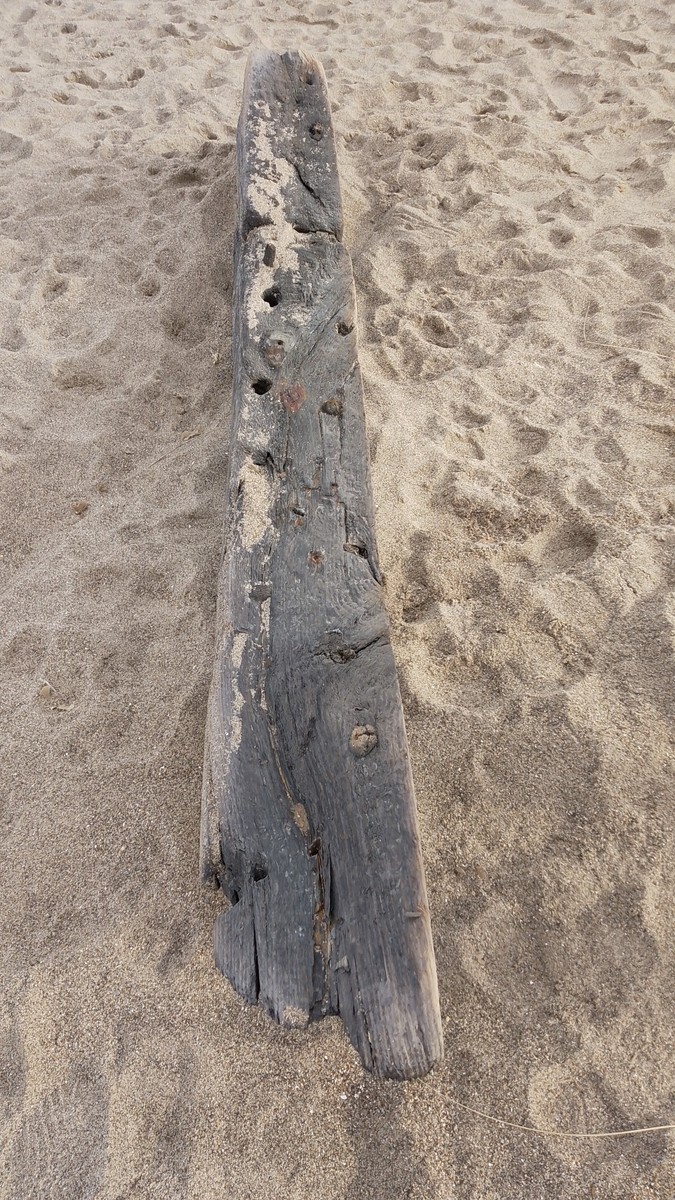
The length of the piece of wreck was in excess of 10ft (over 3m) at least 18 inches (45cm) in depth and over 1ft (30cm) in width. It turns out what we had come across was part of a frame of a ship or the ribs which hold everything together. There was little sign of copper holding the frames together but what was noticeable was plenty of iron spikes and nails along with treenails. There was a double treenail that we photographed - an important detail Andy told us. These treenails were potentially interesting as was the possible chamfered edge to one side of the frame. As they could indicate the style of the boat the timbers came from, but sadly we didn’t find enough of the wreck to be certain whether they were important or just an oddity. It would be difficult to tell from these two pieces just how old the shipwreck was. But Andy’s feeling was that due to the lack of copper fittings, and the shape and size of the timbers it probably came from a reasonably big ship from late 17th or 18th century.
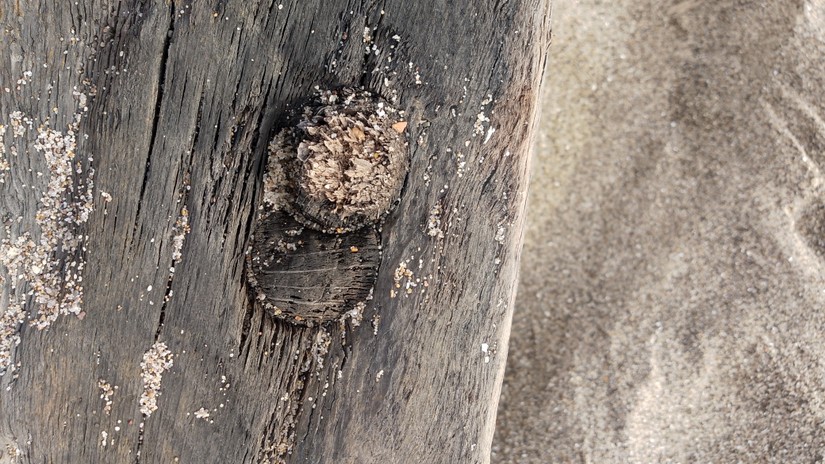
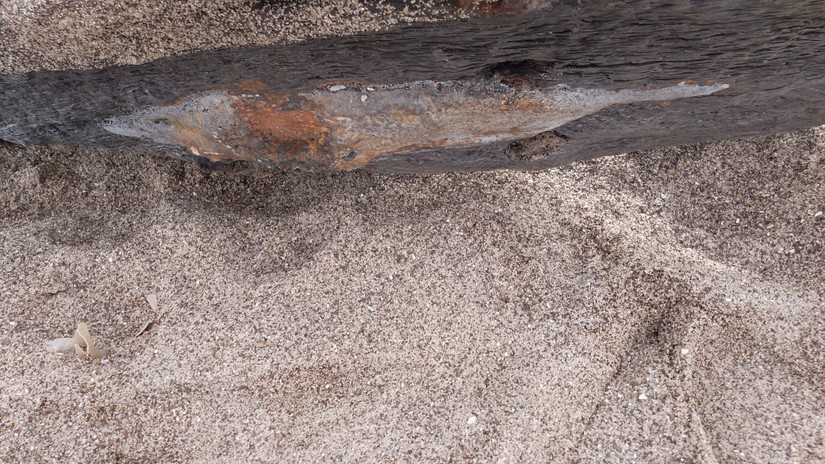
As well as these big bits we’ve also see various sizes of flint and the odd piece of pottery alongside far too much marine litter and debris. It’s been a good few days of finds!!
Lianne and her son Jordan have been recording archaeology on and around the beaches of Lincolnshire since 2017. Lianne runs the wonderfully succeful Sutton-onSea beachcare, in 2018 Jordan was shortlisted for the Young Archaeologist of the Year award.
If you'd like to read a little more from Lianne and Jordan than this blog talks about their volunteer adventures in 2020 and this blog looks at the changing face of Sutton-on-Sea's beach front.





